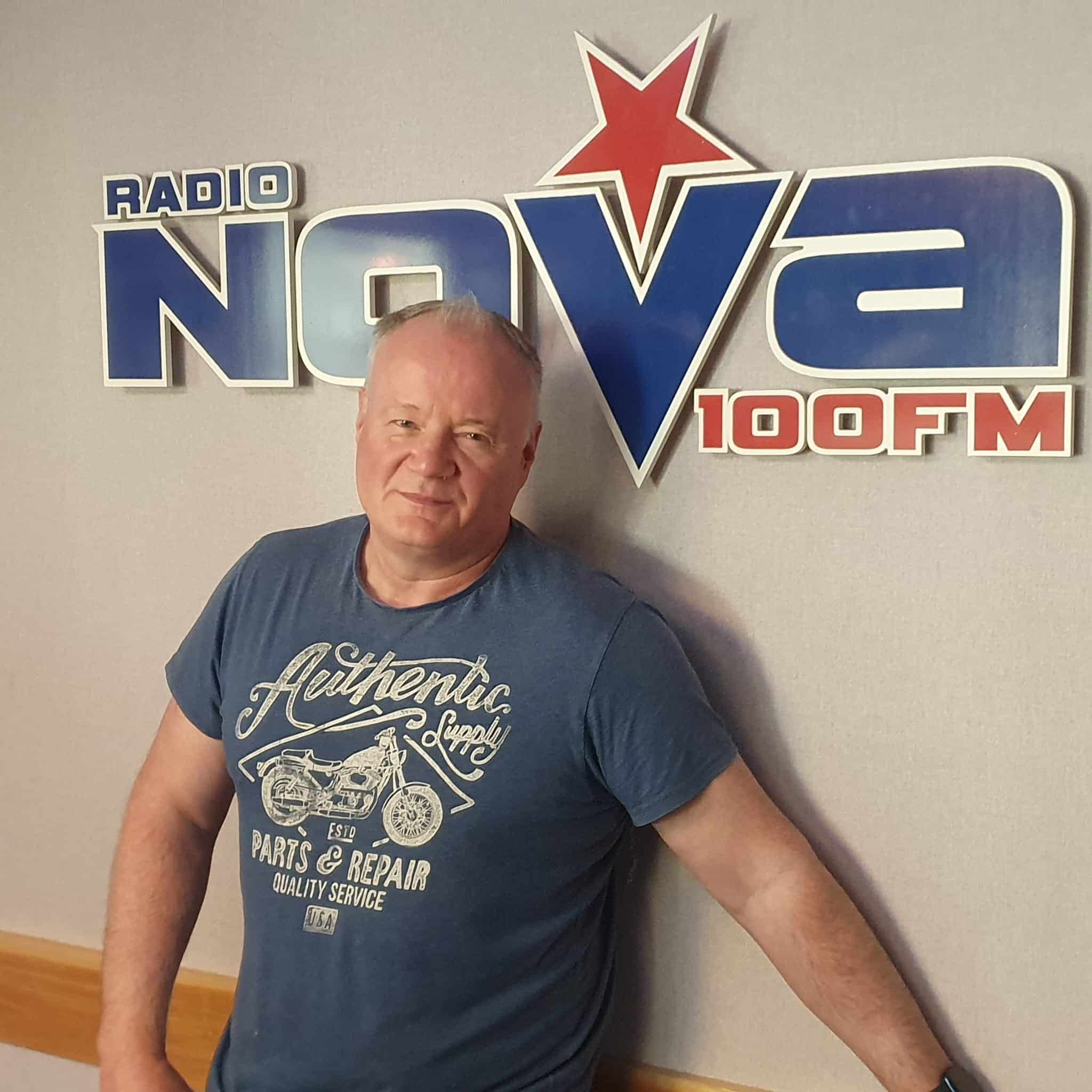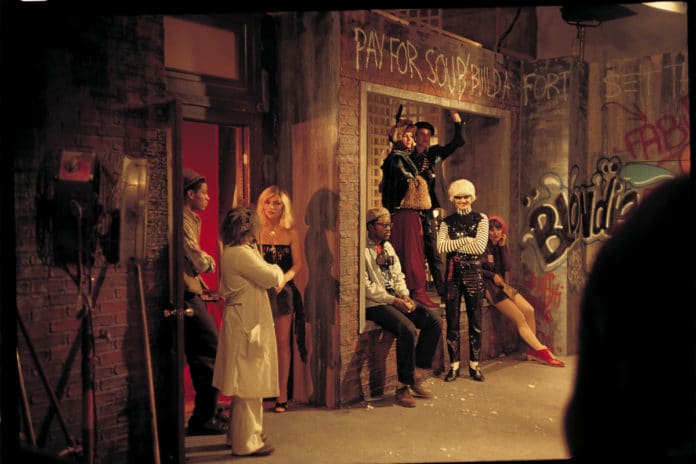Debbie Harry of the hit ’80s band Blondie took to network television forty years ago to introduce the world to the musical phenomenon that would become hip-hop.
“The most recent fad to catch on with kids in our big cities and metropolitan areas is rapping,” the singer explained to Solid Gold audiences back in 1981.
Harry mentioned some up-and-coming hip-hop stars from the Bronx – the Sugarhill Gang, Grandmaster Flash, the Funky 4+1 – before introducing her band’s latest rap-inspired music video.
“Using our new single, ‘Rapture,’ Blondie and some of our friends put together a number to show you what rapping in the street scene is like,” Harry announced.
The ‘Rapture’ video remains one of the most ground-breaking and surprising videos of all time, featuring Jean-Michel Basquiat as a DJ, graffiti artists Lee Quiñones and Fab 5 Freddy, Debbie Harry showing off her rapping skills, voodoo dancers, and, oddly enough, a goat!
The video – directed by Keith MacMillan, better known as “Keef” – was an innovative piece of cinematography at a time when the majority of music videos mainly featured bands performing their song on a sound stage. ‘Rapture’ not only ventured into cinematic storytelling, but also managed to bring together New York City’s hip-hop, art, and clubbing cultures in a fresh and unexpected way. When MTV launched later that year, Blondie’s ‘Rapture’ was the only ‘rap’ video featured on the network’s first day, and one of vey few clips that featured any kind of urban grit.
“One of the things that strikes me about ‘Rapture’ is that it really was the first in many ways. It’s funny because at the beginning, I didn’t like [the video] so much — I was probably thinking in a more grandiose kind of style, to get the true atmosphere of the Lower East Side where the train yards are and create something truly wild … But now, I like it,” said Harry in an interview with The Post.
“It is one of the all-time great New York City videos. It really encapsulates the kind of cross-pollination and energy that was happening in the city at that time, especially downtown. It shows Blondie — who were already a successful band with hits at this point — taking this new form of New York music and really absorbing it and honoring it,” added Sean Corcoran, curator of the exhibit “New York New Music: 1980-1986,” which is currently on show at the Museum of the City of New York.
The success of ‘Rapture’ is owed in part of Fab 5 Freddy, or, Fred Brathwaite who met Blondie’s guitarist Chris Stein through the show “TV Party.” Brathwaite took Stein and Harry to their first hip-hop show in the Bronx in 1979. It was at this performance that Blondie was introduced to a then 21-year-old DJ extraordinaire, Grandmaster Flash.
Upon meeting Flash, Harry said: “I’ve been staring at you for the past 20 minutes or so, and I must say, you’re quite incredible on those turntables. I’ve never seen anything like it.”
“You know something? I feel so good about this, I’m going to make a record about you,” Harry added. Six months later she was rapping “Flash is fast, Flash is cool,” on the radio.
Harry and Stein wanted to combine uptown hip-hop with artsy downtown for the ‘Rapture’ video. Their vision would feature a house party DJ’d by Grandmaster Flash, graffiti, and a cast of quirky New Yorkers.
“It ended up being a cartoon version of reality,” Stein reported.
Unable to film on the actual streets of New York, Blondie converted an Upper East Side soundstage into a mirage of the Lower East Side. Brathwaite and fellow graffiti artist Lee Quiñones were recruited to spray-paint the soundstage walls to give the set an authentically gritty feel.
“Freddy and I got there that morning, and we basically improvised as we went,” said Quiñones. “I said, ‘Let’s make it this big. Let’s make it this small. Let’s flavor it up with some vintage you know, patina-looking tags, just to give it a really gritty, street, downtown [vibe]. I wanted to make it very unique and very genuine to the time.’”
The band then began recruiting everyone they knew to play the roles of extras for the video. “The policeman was a UK journalist who was doing a story on us at the time,” said Stein. “[Drummer] Clem [Burke’s] girlfriend Diane was in there, [punk violinist] Walter Steding was in there — it was a lot of people we knew.”
“The room was quite crowded with people that I recognized from the Mudd Club. I remember in particular, there was a woman with a goat, who I used to call Monica, because when I would see her at the Mudd Club she reminded me of ’60s Italian film star Monica Vitti. She had that hard elegance of an Italian actress, so I thought she was really cool. And there she was leading the goat,” added filmmaker Charlie Ahearn who was on set observing the project.
“The goat’s name was Mona,” said Stein. “We found some guy who was a farmer in New Jersey or something, and he brought a goat.”
MacMillan hired choreographer William Barnes to play the top-hatted character known as the “Man From Mars”. “It was incredible to meet him,” Harry said. “He was very self-assured, he had a strong persona.” Prior to the shoot, neither Harry nor Stein had ever heard of Barnes. “He has an IMDB page with their video and that’s it,” Stein added.
Unfortunately, Flash was unable to appear in the final video, ultimately being replaced by Basquiat who happened to be hanging around set.
“I wanted to be in that video so bad,” Flash told The Post. “But the record label I was at wouldn’t allow me to appear in it … I was so angry … I was supposed to be in the video with Fab, like that was my moment. But my replacement was pretty good.”
It was a long time before the mainstream caught up to Blondie’s trailblazing video. MTV would refuse to air another rap video until 1984, and wouldn’t launch its first hip-hop program until 1987, hosted by ‘Rapture’ alum Fab 5 Freddy.
“[Blondie] kind of opened up the gates for us to take [rap] from the Bronx, to downtown, to Queens, to different parts of the city,” Flash reported. “So for that, I want to say thank you.”








